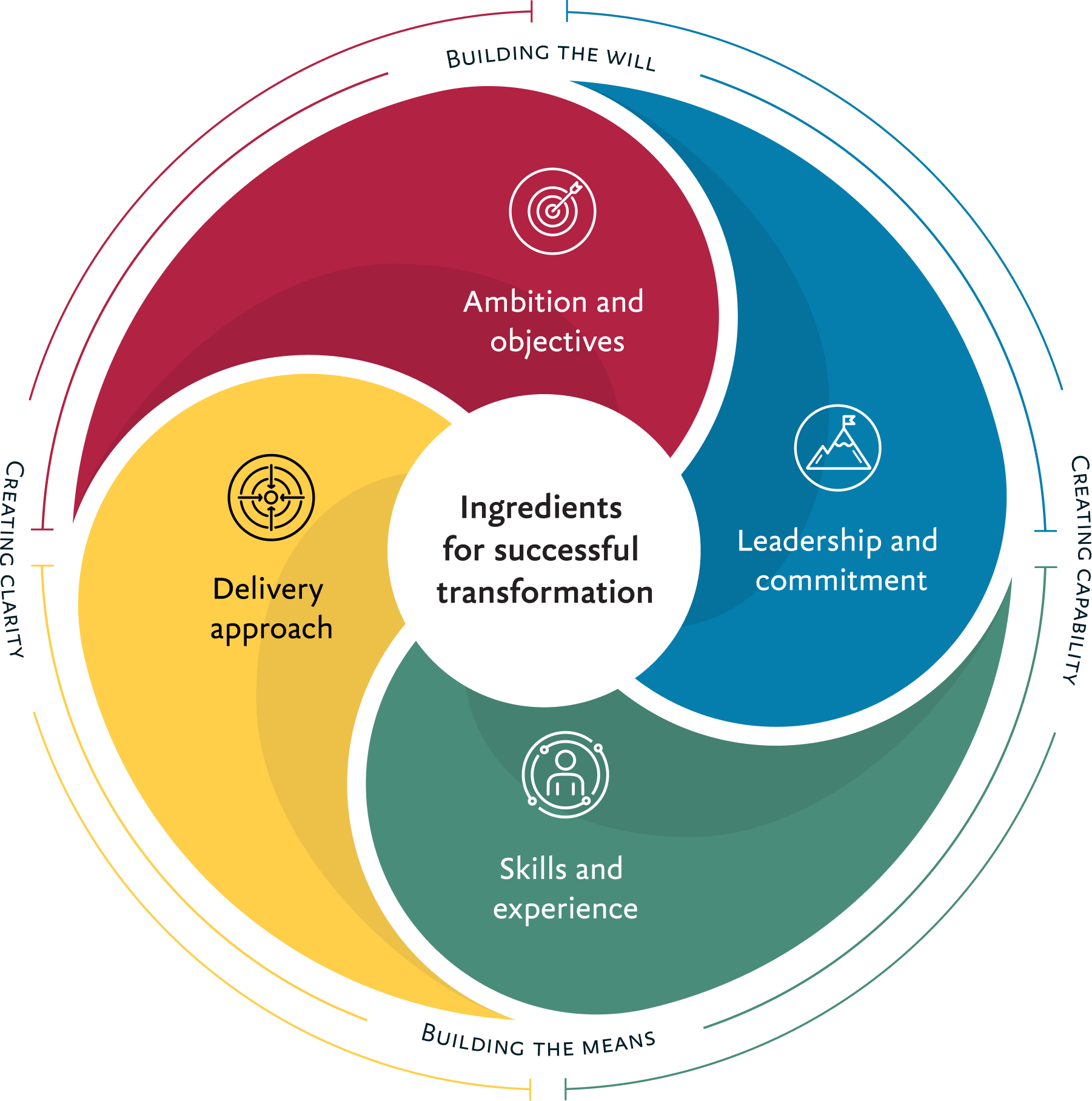The ingredients for successful transformation
Transformation is ambitious and when done right, promises great benefits for your organization. However, it’s also often complex, challenging and can be quite daunting.
There are a few key things that need to be considered if you really want to achieve the right outcomes:
- Ambition and objectives
- Leadership and commitment
- Skills and experience
- Delivery approach.
Successful transformation doesn’t need just one but ALL of these ingredients to come together – to build the will and the means, as well as create the clarity and capability.
It doesn’t matter where you are on your journey - whether you’re just getting started or well underway – but these four ingredients will be key in creating your recipe for successful transformation.
Tap each segment
Click each segment





Ambition and Objectives
A lack of ambition or objectives creates confusion.
We help organizations shape what good looks like, create strategies and mold measurable objectives - all of which respond to the challenges they face and create a compelling case for change.
Find out more


Leadership and Commitment
Without leadership and commitment you’ll face resistance.
We help leaders create the headspace for transformation and unite organizations behind a set of goals and priorities.
We empower teams and make transformation real for everyone involved.
Find out more


Skills and Experience
It’s frustrating for everyone if you don’t have the skills and experience.
We help organizations build and retain high performing teams, ensuring leaders, individuals and external partners have the right skills to deliver.
Find out more


Delivery approach
Not having the right delivery approach can lead to chaos.
We help organizations define the best approach to change, breaking it down into manageable chunks to reduce bureaucracy, build confidence, support innovation and accelerate delivery.
Find out more

Transformation: from recipe to reality
“Berkeley was a key ingredient in the success of one of our most challenging and complex transformations.”
A global energy company
“Berkeley was a key ingredient in the success of one of our most challenging and complex transformations.”
A global energy company
Our client stories
We are extremely proud of our achievements. Our case studies illustrate how we work with clients to deliver real, effective change.













































